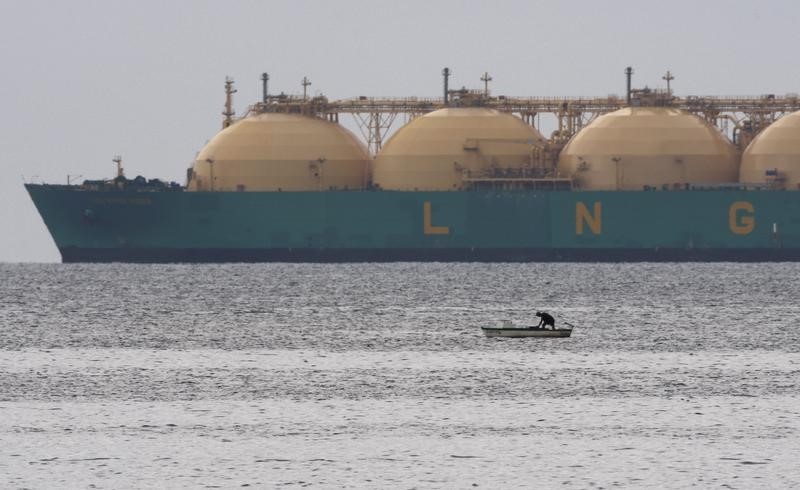By Clyde Russell
LAUNCESTON, Australia, Nov 21 (Reuters) - India is planning to join the Asian rush to boost the use of natural gas over coal, a further sign that the liquefied natural gas (LNG) market will tighten faster than previously expected.
India's state oil refiners Indian Oil IOC.NS , Bharat Petroleum BPCL.NS and Hindustan Petroleum HPCL.NS aim to raise the contribution of natural gas to between 5 percent and 15 percent of their incomes over the coming years, up from virtually zero currently. is part of the government's target to boost the natural gas portion of India's primary energy mix to 15 percent by 2030, up from 6.5 percent now.
Increasing the use of natural gas will mainly come at the expense of coal, a move aimed at meeting climate targets and lowering emissions, something that has become more pressing since New Delhi's air pollution is now worse than Beijing's.
In practical terms what this means is that the state oil companies will be spending billions of dollars to build new LNG import terminals and associated gas pipelines.
This will serve to boost India's natural gas consumption from around 50 billion cubic metres (bcm) currently to around 70 bcm by 2022 and 100 bcm by 2030, according to figures from a government think tank and the Oxford Institute of Energy Studies.
Most of this additional natural gas demand is going to have to be met by imports, given the limitations of expanding domestic output.
India imported around 19.7 million tonnes of LNG in 2016, equivalent to about 26.8 bcm, according to vessel-tracking data in Thomson Reuters Eikon, making the South Asian nation the fourth-largest importer of the super-chilled fuel.
In the first 10 months of this year, India's LNG imports came to 16.4 million tonnes, putting it on track to at least match last year's figure.
EMERGING SUPPLY-DEMAND GAP
The steady import performance this year contrasts with the expected surge in demand in a few years time, and it's this gap that presents a potential dilemma for the Asian LNG market.
Assuming India does actually build its LNG import infrastructure at the pace suggested by the government and the state oil companies, it's likely that it will be ramping up its natural gas demand at the same time as several other countries in Asia.
China is already increasing its LNG imports as it tries to reduce the amount of coal in its energy mix, and this is a trend likely to accelerate in coming years.
China imported 28.8 million tonnes of LNG in the first 10 months of the year, according to the vessel-tracking data, 45 percent more than the 19.8 million tonnes China bought in the same period in 2016.
But it's not just China, with Pakistan, Bangladesh, Thailand, Vietnam and the Philippines all building new LNG import infrastructure.
Add to this the planned imports by traditionally exporting countries like Malaysia, Indonesia and Australia and it becomes clearer that LNG markets are likely to tighten substantially, and in a relatively short time frame around 2021-23.
The problem is that final investment decisions (FIDs) on new LNG plants have fizzled in the past two years, having run at about 10 million to 20 million tonnes per annum for more than a decade previously.
"They have now dried up to 6 million tonnes in 2016 and a questionable 3 million in 2017," Fereidun Fesharaki, the chairman of consultants FGE, said in a research note received on Nov. 15. "No one is certain whether there will be any FIDs in 2018."
FGE forecasts that a 20 million tonne surplus of LNG in 2020 will turn to a 50 million tonne deficit by 2025.
That's a dramatic swing, which if realised will sharply alter the pricing dynamics of LNG.
If LNG prices do rise sharply, it may cut demand for the fuel and make cheaper coal seem attractive enough to outweigh its pollution penalty.
But it also means that LNG project developers may be too late to catch the next boom in demand, given it takes several years to build a greenfield export plant once FID is taken. (Editing by Richard Pullin)
